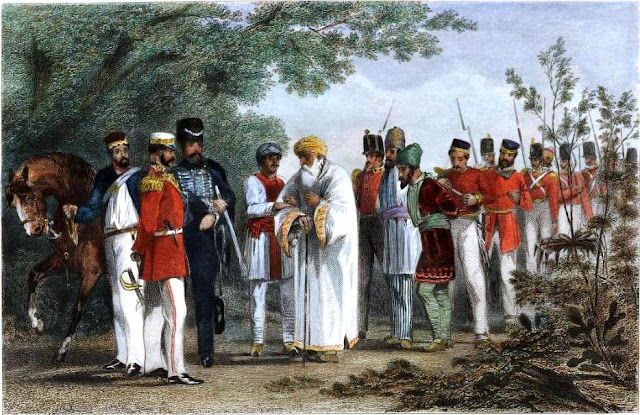Bahadur Shah Zafar, The Tragic Mughal Monarch

Capture of Bahadur Shah Zafar and his sons/ Wikimedia Commons Today is the 150 death anniversary of Bahadur Shah II, more famously known as Bahadur Shah Zafar. He was the last Mughal Emperor who was deported to Rangoon by the English on the charges of participating in the Great Revolt of 1857, often called the First War of Independence. Bahadur Shah Zarfar, who ascended the Mughal throne in 1837, was the leader of the Revolt of 1857 in Delhi and was declared Shahenshah-i-Hind (the king emperor of Hindustan) by the sepoys of Meerut. He was then over eighty years of age. He was a poet of considerable merit and a patron of poets and literary men including the famed Mirza Ghalib. Writing under the pen name ‘Zafar', he composed in both Hindi and Urdu. When in exile he was denied a pen and paper, he used a burnt stick to write his epitaph on the walls of the garage in which he breathed his last. During the revolt, Bahadur Shah Zarfar became a leading


